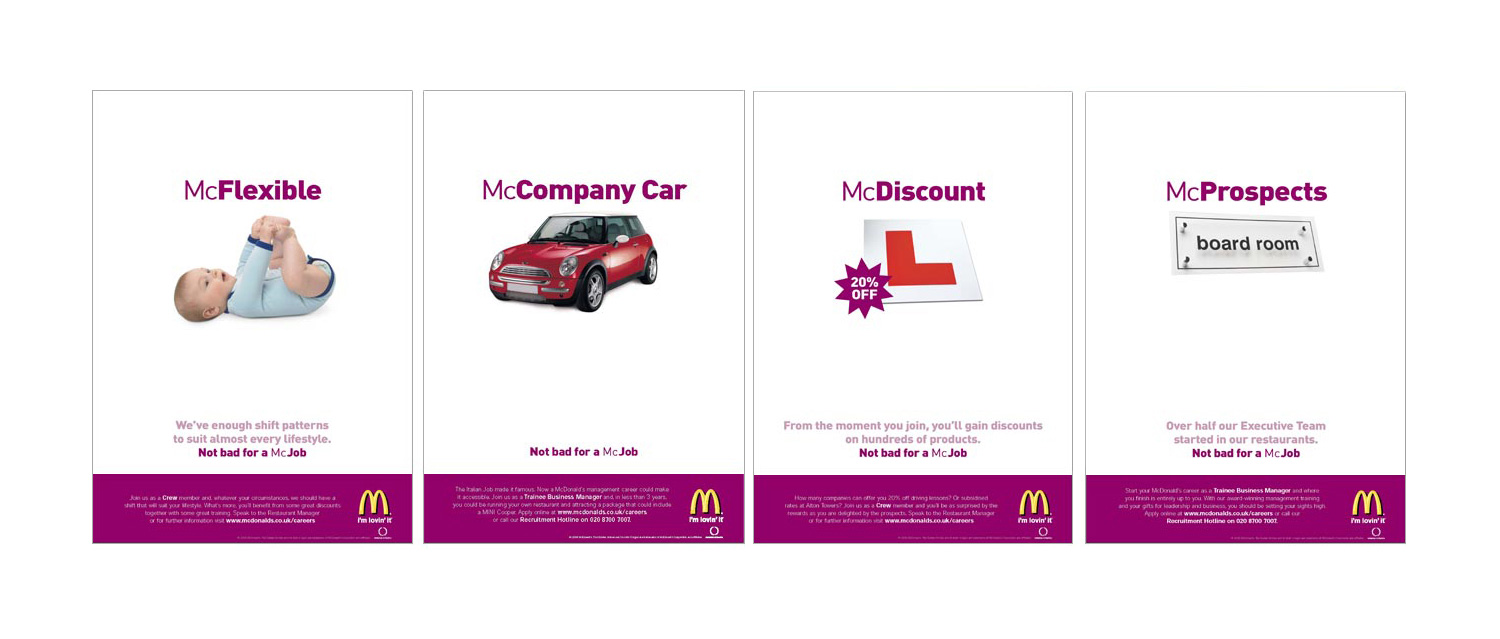Corporate PR Example: Mc Donald’s
How do you change the conversation when the only thing that people talk about is how bad you are?
Turning around a brand’s reputation can take time, investment, determination and commitment. Just look at how long it’s taken Stella Artois to rebuild equity and sales.
McDonald’s was in a similar position. If not worse. Its reputation was tarnished. It was being blamed for all of society’s ills. Obesity. Litter. Anti-social behaviour. The loss of city centre life. It had become the poster boy for rundown neighbourhoods where delinquent teenagers and obese families would hang out. You name it, it was levelled at the door of the Golden Arches.
Content creation and distribution
Issues and crisis
Experiential
Media relations
Chosen by PR Week as one of the best campaigns of the decade.
Not only was brand equity taking a hit, week after week, day after day, the tarnished reputation was starting to impact sales. New openings were being rejected. Extended licences were being refused.
The brand had to act. But where do you start?
- Begin to reinvigorate the estate with a heavyweight investment programme that would reenergise look, feel and the experience
- Don’t spend time an energy trying to change the perceptions of non-customers and haters – spend the time on the people who matter (a) the customers (b) your own people.
- Lead by example – where the C-suite goes, others will follow
- Pick your fights – you won’t win them all, but some are more important than others
- Facts, facts, facts – tell the stories that matter and that smash the myths
Over the course of four years, the journey with McDonald’s involved leading the franchise programme; creating new and novel ways to talk about farming and food; targeting breakfast and coffee occasions: spearheading the new look; and challenging the definition of McJob.
The Change the Definition campaign continues to be an all-time favourite.
The definition of McJob is this:
An unstimulating, low-prestige, low-paid job with few prospects
It was an affront to the thousands of people who worked there not to mention the one million customers who walked into McDonald’s every day.
By challenging the Oxford English Dictionary’s definition of McJob, the conversations switched to everything that is good about the brand – from the 98% of food sourced from British farmers, to the benefits of working there, to the reasons why 1m customers were happy to walk through its doors every day.
The campaign was a fantastic example of integrated media communications, blending targeted above the line executions with experiential, in-store activations, PR, ambassadors and influencer relations.
What did it deliver?
Significant improvement in sales, ‘guest counts’ and market share. Customer perceptions of the brand also improved significantly, especially on ‘trust’ which was a key objective. There were 11 consecutive quarters of sales growth. And, in addition to trust, there were significant improvements in all but one of the 30+ brand metrics continuously tracked.
It was recently highlighted by PR Week as one of the campaigns of the decade.


